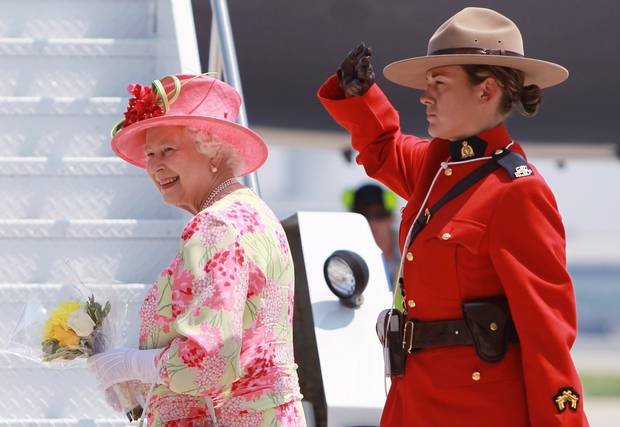
A Mountie salutes the Queen at Toronto’s Pearson International Airport on July 6, 2010.
DARREN CALABRESE/THE CANADIAN PRESS
On April 22, 1926, Globe readers could easily have skipped past news of the young princess's birth the day before. It got only a short Associated Press story on page 5. "She is slightly below the average weight, but the physicians report that she is strong and healthy and has a quantity of hair," the story said about the Duke and Duchess of York's baby girl – who didn't have a name yet, though Elizabeth was reported to be the top contender. "The possibility of Britain having another Queen Elizabeth and another Elizabethan era makes a strong appeal to popular imagination."
Nine decades later, Queen Elizabeth II is Britain's longest-reigning monarch, but this April 21 will be a low-key affair, at least by royal standards. Her actual birthday doesn't get the same pomp and ceremony as her official ones (she has several) this spring. But the reminder of her advancing age will be significant for Canadians who fear, or hope, that the monarchy won't continue for long when the Elizabethan era ends and her less popular son, Charles, inherits the throne. Here are nine things to know about what the milestone means and how the Queen's long reign has shaped Canada.
Commemorative crockery sits in a shop window in London on April 18, 2016.
TOBY MELVILLE/REUTERS
1. Canada officially observes all sovereigns' birthdays – regardless of when they were actually born – on Victoria Day, the last Monday before May 25. Several countries and British territories have their own rules for scheduling public holidays for the Queen's birthday. Here's where they fall in 2016:
- April 18: Saint Helena, Ascension and Tristan da Cunha
- April 21: Falkland Islands
- May 23: Canada, Belize
- June 6: New Zealand
- June 11: United Kingdom, Tuvalu
- June 13: Most of Australia, Papua New Guinea, Solomon Islands
- Sept. 26: Western Australia
The mishmash of different dates arose due to the varied climates, physical and political, in the countries that share the Queen as head of state. Britain chose June in the 18th century so it would have warm summer weather for outdoor celebrations. Former British colonies in the Southern Hemisphere followed suit – albeit with their own rules for deciding the exact date – even though June is the beginning of winter in New Zealand and the temperate parts of Australia. The Falkland Islands, a British overseas territory that is farther south than any of the Pacific Commonwealth realms, celebrates on April 21 because June is too cold. The state of Western Australia is another outlier because it has its own state holiday in June, so to avoid scheduling conflicts, the governor decides a different birthday for the Queen every year.
Canada's holiday originated with 19th-century celebrations honouring Queen Victoria, who was born May 24. Belize is taking May 23 off too; it's the only Caribbean Commonwealth realm that still has an official Queen's birthday holiday, called Sovereign's Day or Commonwealth Day.
2. The Queen is the world's oldest monarch currently living. But she's only been Queen for 64 years and just over two months, so as far as longest reigns go, she's still behind King Bhumipol Adulyadej of Thailand, whose 90th birthday and 70th year on the throne are coming up soon.
3. While the Queen is Canada's longest-lived monarch ever, she isn't our longest-reigning one. Since the Canadian monarchy also includes the Valois and Bourbon sovereigns of New France, Louis XIV – whose reign in the 17th and 18th centuries lasted 72 years – has her beat by eight years.
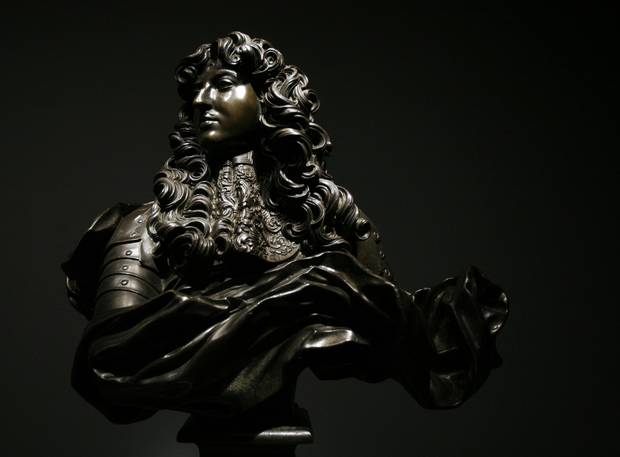
Louis XIV of France.
SEAN KILPATRICK/GLOBE AND MAIL
The Queen is also only the 44th longest-reigning monarch in recorded history. (No. 1, Sobhuza II of Swaziland, has a hard record to top; he was only four months old when his father died in a dancing accident, and reigned for 82 years before his death in 1982.)
4. The Queen has visited Canada 22 times during her reign. The most recent visit was a royal tour in 2010. Canadians are much more likely to get visits from her children or grandchildren now (her grandson Prince Harry is in Toronto next week). Here are some highlights from her past visits to Canada:

The Queen’s visits to Canada
Michelle Pressé takes a look at 10 of her most memorable trips and how The Globe and Mail covered them
Read the article5. There have been 15 different Canadian prime ministers during the Queen's lifetime. The first was Mackenzie King, who, in the year of her birth, was embroiled in a messy constitutional crisis with her grandfather's representative in Canada, Governor-General Lord Byng. Louis St. Laurent was the first to welcome her to the throne; in 1953, he visited London with Canada's delegation to the coronation.
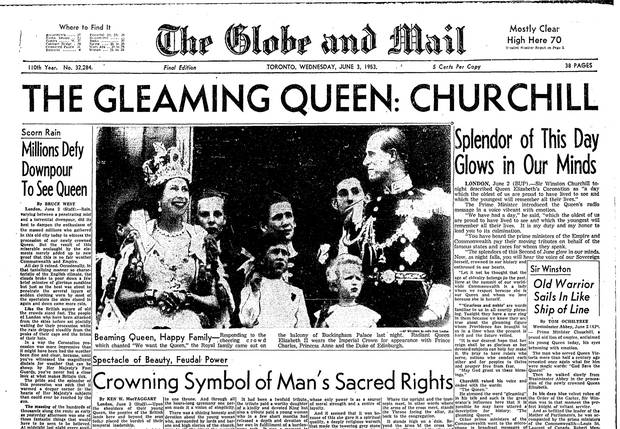
The Globe and Mail’s front page, June 3, 1953.
From the archives: Watch Queen Elizabeth II’s coronation in 1953
1:17
6. Justin Trudeau and his predecessor, Stephen Harper, are the only two Canadian prime ministers to be born during her reign as Queen. Mr. Trudeau played up the warm relationship between his father, former prime minister Pierre Trudeau, and the monarch when he toasted her at the Commonwealth leaders' summit in Malta last November. The Queen thanked Mr. Trudeau personally for "making me feel so old."
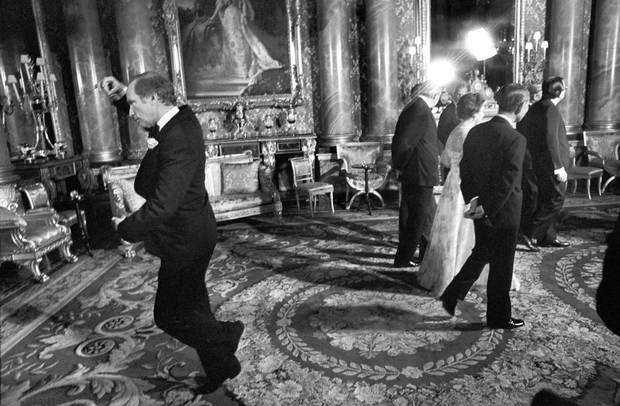
Pierre Trudeau pirouettes behind the Queen during a May 7, 1977, photo session at Buckingham Palace in London.
DOUG BALL/THE CANADIAN PRESS
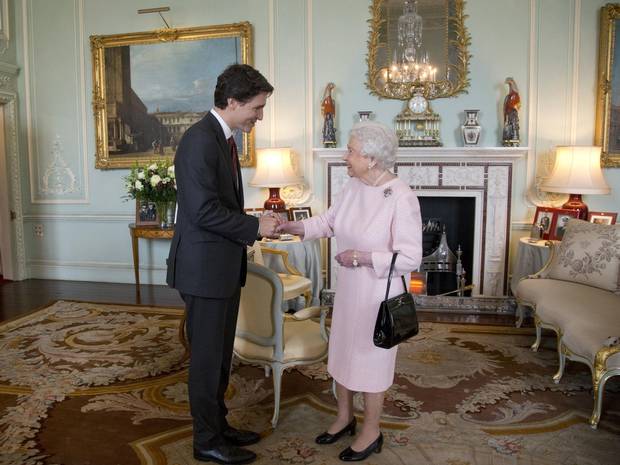
Justin Trudeau meets the Queen during a private audience at Buckingham Palace on Nov. 25, 2015.
YUI MOK/ASSOCIATED PRESS
7. Canadians are divided about whether the Queen should be this country's last sovereign. Polls on support for the monarchy can vary depending on how the question is asked; a Forum Research poll last year found 39 per cent favoured abolishing the monarchy when the Queen dies, and an Angus Reid Institute survey released this week found only 46 per cent would recognize Charles as king.
Tom Freda, director of Citizens for a Canadian Republic, told The Canadian Press recently that an open parliamentary debate about ending the monarchy should begin now, given the Queen's age, so Canadians aren't left discussing it while she's on her deathbed. That process is already under way in Jamaica – which doesn't have its own Queen's birthday holiday – where a government Throne Speech last week proposed legislation to replace the Queen as head of state with a largely ceremonial president. "This is not a behind-the-scenes issue any more," Mr. Freda said. "This is now front-and-centre in the Commonwealth."
8. The Queen doesn't get her birthday off. She is scheduled to attend a plaque-unveiling ceremony Thursday and greet local politicians and residents on a stroll down the Queen's Walkway in Windsor. She and other Britons will be lighting beacons to mark the occasion, but her real 90th-birthday festivities don't begin until a series of public events in May and June, including the annual Trooping the Colour celebrations in London.
The Royal Family watches from a Buckingham Palace balcony on June 13, 2015, at the annual Trooping the Colour parade.
TIM IRELAND/ASSOCIATED PRESS
9. If you're a Canadian who's turning 90 or older, you can write Rideau Hall to ask for an official birthday message from the Governor-General. But if you want one from the Queen herself, you have to be 100 or older, or have been married for 60 years or more. (You can find the request forms on Rideau Hall's website. They recommend making requests at least two months in advance.)
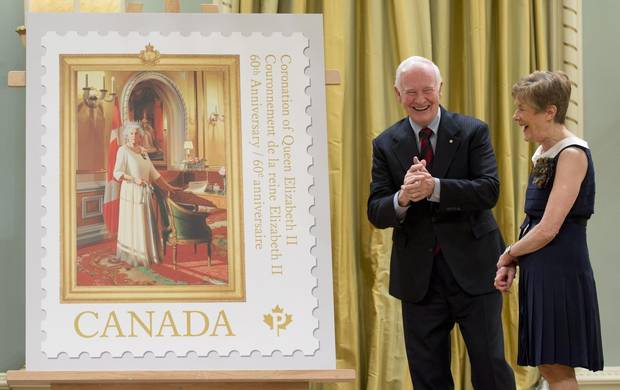
Govovernor-General David Johnston and his wife, Sharon, unveil a postage stamp commemorating the 60th anniversary of the Queen’s coronation at Rideau Hall on May 8, 2013.
ADRIAN WYLD/THE CANADIAN PRESS
With a report from The Canadian Press
Editor's note: An earlier version of this story erroneously cited Tom Freda of Citizens for a Canadian Republic as saying it's time for a debate about leaving the Commonwealth.
MORE FROM THE GLOBE AND MAIL
From the archives: Watch the Queen’s 1964 visit amid Quebec protests
0:39



